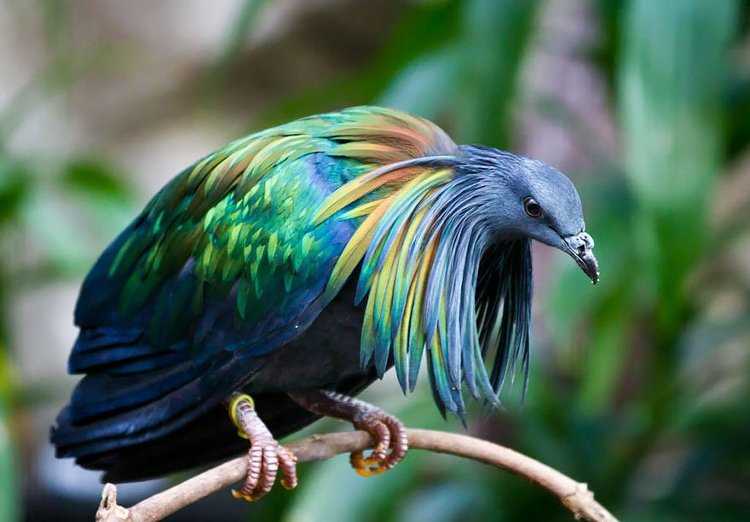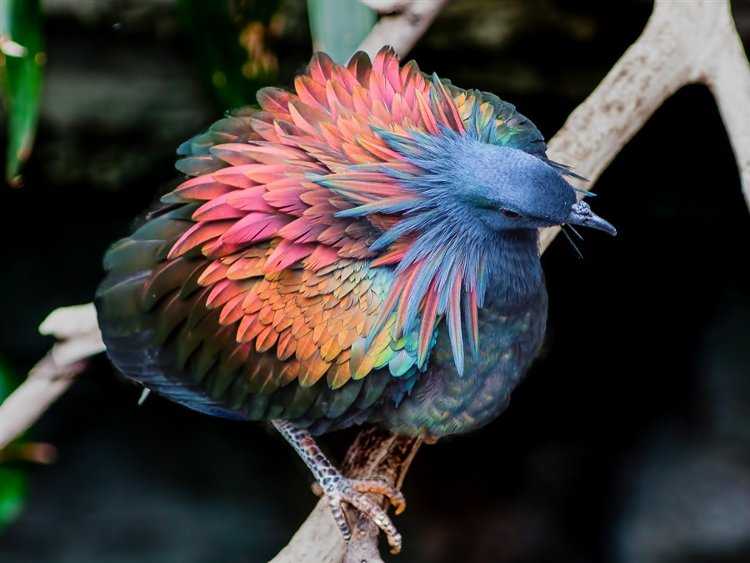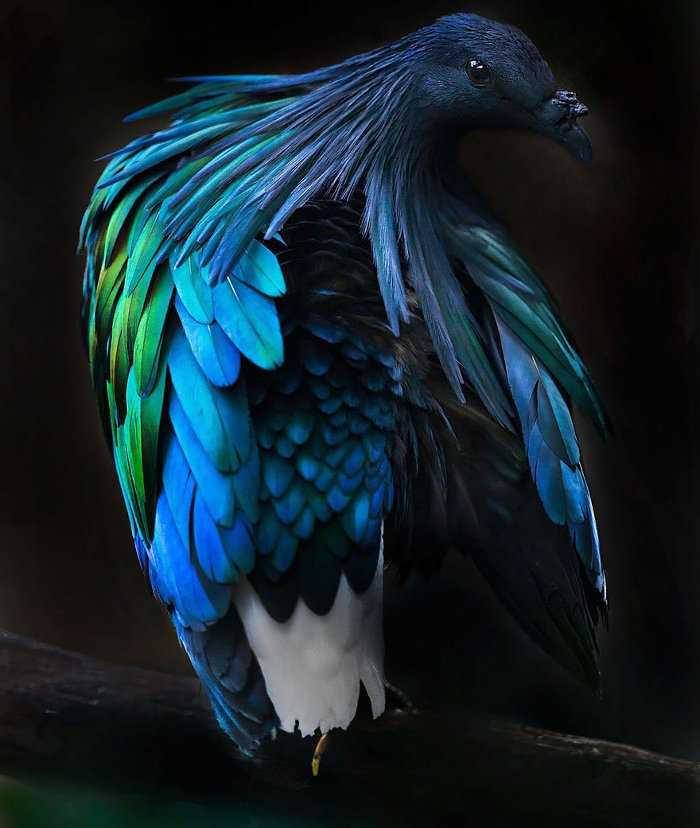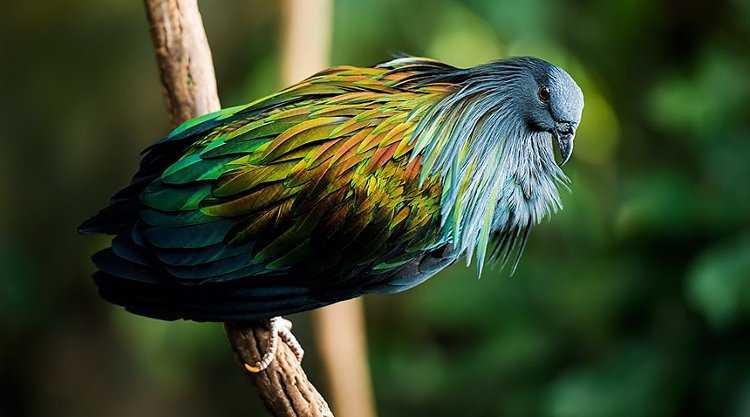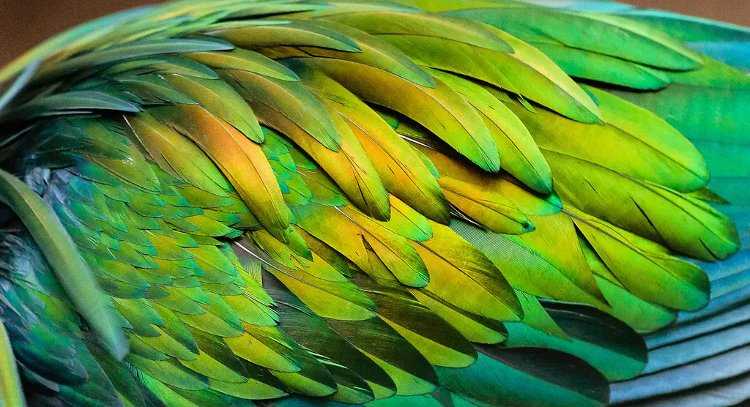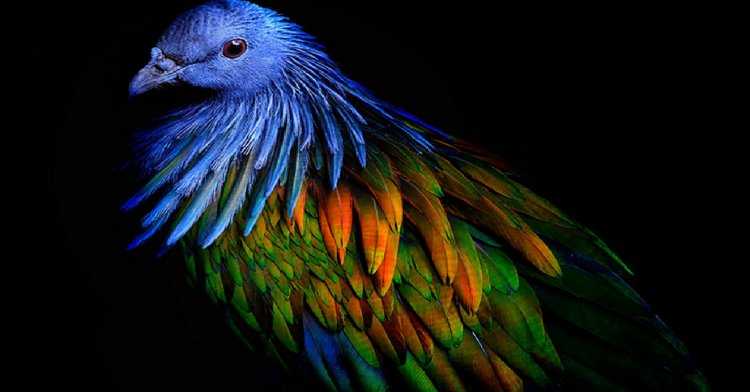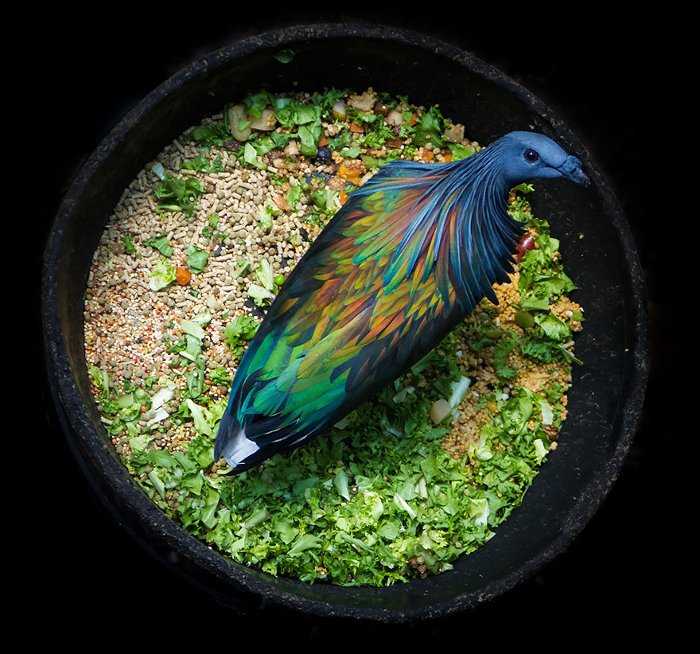Astonished by the mesmerizing beauty of the world’s most peculiar pigeons
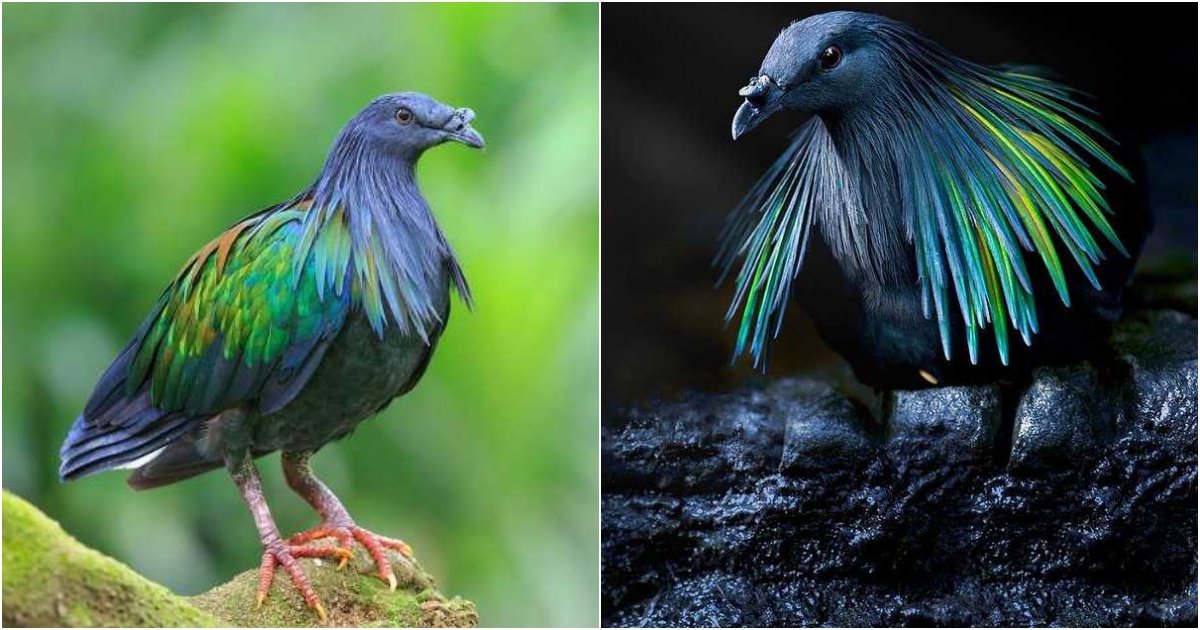
With their stunning iridescent plumage, the “beauty” of Nicobar pigeons leaves many people amazed and in awe.
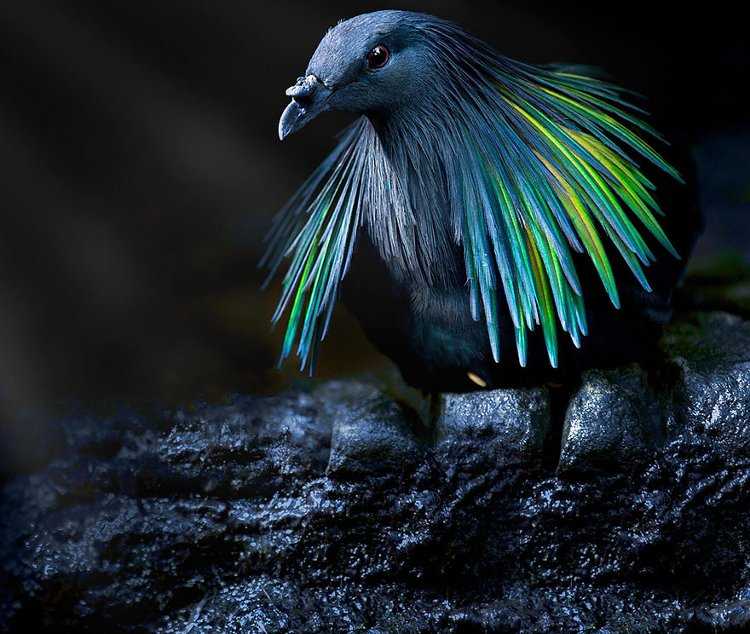
Have you ever heard of the Nicobar pigeon, a remarkably beautiful species of pigeon with radiant rainbow-like feathers? They are the closest living relatives of the unfortunate extinct Dodo bird.
The Nicobar pigeon, scientifically known as Caloenas nicobarica, is a peculiar species of pigeon found on small islands and coastal regions in the Nicobar Islands, eastern Malaysia, as well as the Solomon and Palau islands. Currently, the Nicobar pigeon is the only member of the Caloenas genus.
These pigeons are large, measuring approximately 40cm in length. They have a bluish-gray head, similar to the upper neck feathers. Their tail is very short and pure white. The rest of their plumage consists of lustrous green with intermingled vibrant colors such as pink, purplish-pink, orange, green, and emerald. Their irises are dark-colored.
With their exceptionally radiant plumage, these exquisite pigeons often lead people to believe that they are birds from paradise.
According to scientific explanations, the reason why Nicobar pigeons have much more vibrant colors than ordinary pigeons is mainly due to their geographical location and habitat.
Being predominantly found in the Nicobar Islands, a small archipelago with fewer natural predators, Nicobar pigeons can freely display their captivating appearance without fear of being discovered.
Living without the need for concealment or camouflage allows Nicobar pigeons to fully flaunt their attire.
Their exquisite plumage is one of the most beautiful among the avian kingdom.
According to local residents, the breeding season of Nicobar pigeons falls during spring and summer (April to May), during which they lay only one egg. Their nests are simple and placed on tree branches with a height of 5 to 10 meters above the ground.
Nicobar pigeons prefer to feed on various seeds and fruits found in the forests. They can live solitarily or in flocks, forming communal nests on the same tree.
They are also known to forage and nest in secluded forest areas of small islands. When foraging, they descend to the ground, and when they want to rest, Nicobar pigeons fly back to their nests. They have also been observed to take midday naps.
Due to their outstanding physical appearance, Nicobar pigeons are also hunted for the purpose of being kept as decorative birds. Currently, their population is scarce, and they are considered a rare and protected species worldwide.

